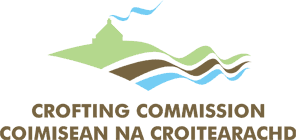Decrofting (whole croft)
‘Decrofting (whole croft)' removes all the land out of crofting, so it is no longer subject to crofting law.
We typically allow this only for a reasonable purpose, such as:
- Building a dwellinghouse, halls, churches, or schools
- Harbours, piers, or roads
- Generation of energy
- Purposes likely to provide employment
Who can apply?
- A tenant crofter
- An owner-occupier crofter
- A landlord of a vacant croft
Is this the right application for me?
- Use this application if you are decrofting the whole of your croft.
- If you are only decrofting a part of a croft, you should complete a decrofting (part croft) application.
Getting approval quickly
We use a set of simple rules called 'parameters' to assess your application to decroft a whole croft. If your application meets every parameter, and no one objects, we can approve it more quickly.
Check list
Your application must meet all these points for a quick decision:
- Purpose: The application must be for a reasonable purpose.
- Size: The area being decrofted must be 0.4 hectares or less.
- Other buildings: There are no buildings on the decrofting area that are or could be used for agriculture.
- Access: There is sufficient access to other crofts or common grazings land.
- Landlord (if tenanted): The landlord must have made no negative submissions.
- Objections: No one has objected to the decrofting application.
- Demand: No one has expressed demand for the croft tenancy if it were to be let.
If your application does not meet all the simple rules, it is treated as a complex application. This means it is passed to senior staff for review, and the decision will take longer to process.
How do I apply?
To apply, complete the 'whole croft decrofting' application form. Please read the guidance notes first. If your application doesn't match the register of crofts or is incomplete, we won't be able to process it. You can submit your application online or by post. First, search for your croft and then find the correct form.
Apply now
You must also include:
- A detailed map of the area being applied for.
- Planning permission: Provide the reference number, a copy of the permission, or a letter from the council confirming permission is not needed. We cannot decide your application without this.
- Registers of Scotland application: If your croft is not already registered with the Registers of Scotland, you must submit a first registration (Form A). If your croft is registered, you'll submit a subsequent event (Form B) if the application is approved. Each Registers of Scotland application has a fee of £90. We will process and forward these applications on your behalf.
The process
- Initial checks: We'll check your application for completeness and correct planning documentation.
- Advertising: We will advertise your proposal in a local newspaper for a 28-day public consultation period to allow for comments or objections.
- Decision: We aim to make a decision on straightforward applications that meet all the parameters within 16 weeks. We cannot make a decision until your croft is registered with the Registers of Scotland.
What happens after a decision?
We will notify you and any other involved parties of our decision.
- If approved:
- You will be sent a decrofting direction. This will be available to download on the register of crofts one week after issue.
- Tenant crofters or their nominee must buy the land within 5 years of the direction date for the decrofting to take effect.
- The decrofting takes effect on the day the decrofting direction is registered with the Registers of Scotland.
- If refused: You have 42 days to appeal our decision to the Scottish Land Court. You can find more information about this on our appeals page.
Further information
Decrofting law, policy and procedure following termination of a tenancy
Decrofting law policy and procedure
